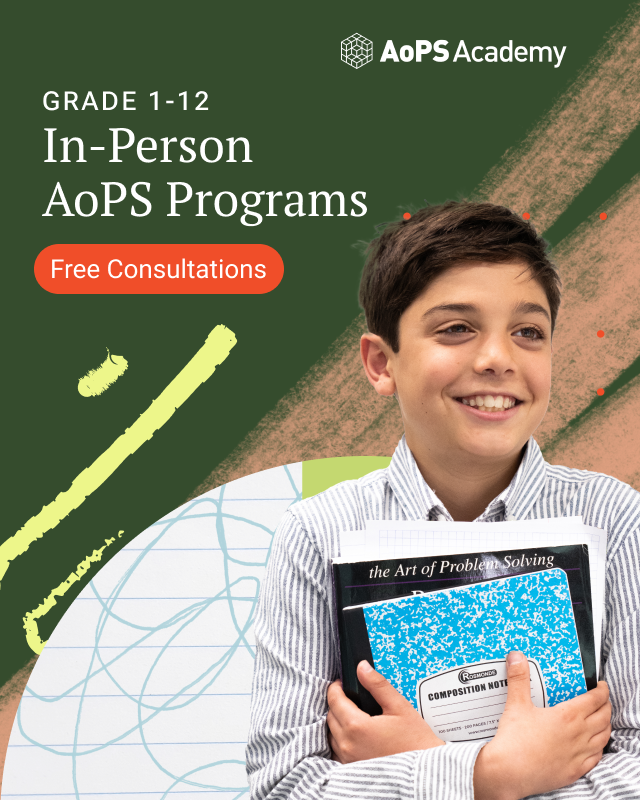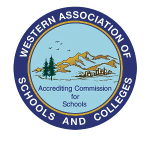The answer is a resounding 'yes', because AoPS, from the very beginning, is committed to training students to think instead of training them to do something a computer can do better. This means providing them with strategies to solve problems they’ve never seen before so they can most effectively reach truth! With the evolution of AI, this process is more important than ever. To understand why, we need to first examine how AI is reshaping education and what skills will matter most in the years ahead.
The Problem with Box-Checking Education
You've heard the saying "little kids, little problems; big kids, big problems"? The same applies to high-achieving students—they face high-achieving problems. The sheer number of boxes that need checking (academics, sports, community involvement, research, etc.) to accomplish their goals can seem staggering, so naturally, any assistance in this process gets used. Enter AI as that assistance, revealing a troubling truth: our current educational process was already poorly designed to recognize and develop talent.
AI is simply exposing weaknesses that already existed with our K-12 system's strong focus on outcomes and checking boxes over the joy of learning. For decades, we've operated under an industrial education model that separated learning into individualized buckets that don't reflect the interconnected world students will actually inhabit. Cross-disciplinary thinking has never been more important, yet traditional education continues to emphasize isolated skill development and standardized curriculum over the ability to reason and make connections between ideas.
Where Humans Thrive vs. Where AI Excels
Here's the crucial distinction: while AI excels at following prescribed lists and executing commands (even when trained on human-generated data), humans thrive in their ability to reason, make connections across fields, pivot when necessary, and solve novel problems. As our world becomes increasingly complex, we need thinkers who can navigate uncharted territory, not workers who can execute predetermined steps.

This difference becomes stark when we compare classroom environments. AoPS classrooms put students in the driver's seat—they carry the cognitive load and discover the satisfaction that comes from wrestling with challenging problems through collaborative discussion. Traditional classrooms create the opposite environment: students learn to fear being wrong because incorrect answers damage their grades, rather than embracing wrong answers as stepping stones to understanding. When students focus on avoiding mistakes rather than learning from them, they're essentially training to do what computers do best—follow rules and avoid errors—instead of developing the messy, creative, iterative thinking that humans excel at.
The AoPS Difference: From Consumers to Creators
Before the advent of AI, AoPS was already designed to train young students to face tomorrow’s challenges so that they are prepared in a world of emerging technology - this philosophy still holds true and, therefore, AI has less of an impact on how we run our programs. Art of Problem Solving continues its steadfast mission to discover, inspire, and train the next generation of problem solvers. The most effective way to accomplish this mission is to treat students as collections of strengths to be challenged and nurtured, rather than a collection of weaknesses or gaps to be fixed. The difference is transformative.
This strength-based philosophy shows up in how AoPS structures learning itself. Consider how much of a typical student's day is spent consuming content others have created versus how much time they spend creating, producing, or making something original. AoPS flips this ratio, emphasizing the deep understanding that builds grit and resilience through authentic problem-solving experiences. After all, content is now ubiquitous and the world's knowledge can be carried in your pocket—sifting through that content and making interesting connections is the currency for the next generation.

This shift from consumption to creation reflects AoPS's broader educational philosophy. AoPS approaches education as a design challenge—building flexible learning environments where each student can discover their best self. Traditional education uses a fabrication approach: standardized inputs, prescribed processes, and identical outputs for everyone. This fabricator mindset is demotivating because students instinctively know real success requires more than following predetermined steps. AoPS's design approach creates spaces where students thrive because creative problem-solving becomes more valuable than executing formulas or checking boxes.
Why This Matters More Than Ever
The timing of this design approach is more critical in today’s world. Even just a few years ago, box-checking could get you pretty far. You could innovate later—in college or your first job—when you suddenly realized no one was going to hand you a list of tasks to complete. But AI has changed this timeline dramatically. Artificial intelligence excels at those lists and can handle much of that lower-level work efficiently.
If we continue training students primarily for standardized tests and worksheet completion, we're essentially preparing them to compete against machines—a battle they're destined to lose. Standardized tests produce standardized thinking, and multiple-choice assessments reward pattern recognition over creative problem-solving.
The Courage to Create
Beyond developing thinking skills, AoPS helps students overcome the fear that has paralyzed too many young people: the fear of putting their ideas out into the world. Creating something of value for the community requires vulnerability—it means laying out a piece of your soul for others to assess. But this is exactly what reveals character and builds the courage to persevere.
We've spent years dictating paths to students, but taking risks and exercising agency are fundamental to human flourishing. Students need opportunities to produce work that matters, to fail safely, and to discover that failure often provides the most valuable learning experiences.
Redefining Success for the AI Age
This courage to create becomes even more important when we ask a fundamental question: What's the goal—college admission or preparation for life? How we answer determines everything about how we educate our children.
Traditional metrics of success—test scores, GPAs, college acceptances—may get students into institutions, but they won't necessarily keep them there or prepare them for what comes after. It's like training your whole life to be a runner only to discover you need to be a swimmer. You might be in good shape, but you're facing your first significant pivot.
AoPS recognizes that students will face many such pivots throughout their lives. Rather than delaying this reality until college or career, why not develop these adaptive capabilities now, especially as the world continues changing at an accelerating pace?
The Bottom Line
We stand at a unique moment in educational history, straddling two systems: standardized testing and grades on one side, innovative and creative thinking on the other. AI is rapidly taking over one of these sides, making the choice clear.
The students who will thrive in an AI-dominated world won't be those who can execute predetermined steps most efficiently—machines will handle that. Instead, success will belong to those who can reason across disciplines, solve novel problems, communicate complex ideas, and create value where none existed before.

The beauty of AoPS is that it has been developing AI-ready skills in students for decades, long before anyone worried about artificial intelligence. While traditional schools continue their engineering focus on standardized results, AoPS remains the clear choice for parents who want their students prepared for a world that values creative thinking over box checking.












